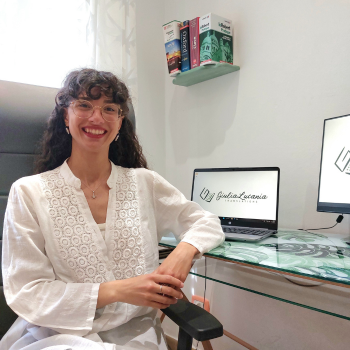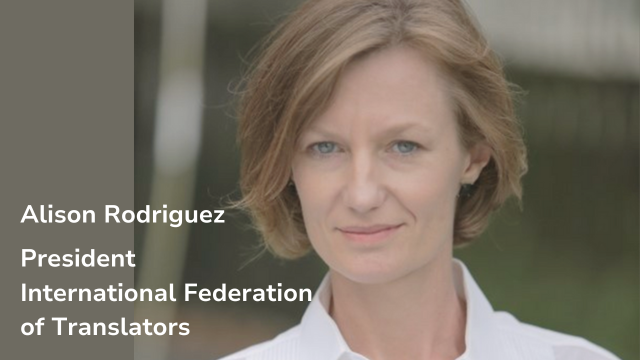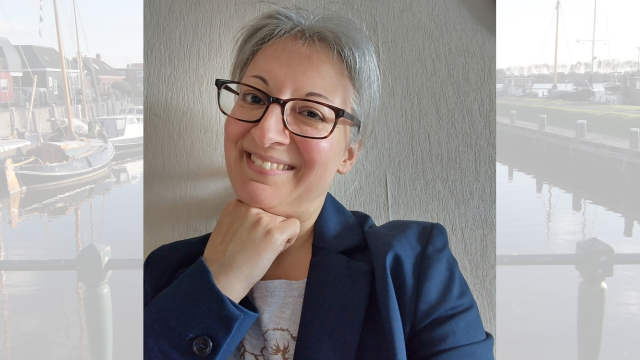-
QUALIFICATIONS
- For Linguists Worldwide
- For UK Public Services
- Preparation
- Policies & Regulation
-
MEMBERSHIP
- Join CIOL
- Membership grades
- NEW for Language Lovers
- Chartered Linguist
- Already a member?
- Professional conduct
- Business & Corporate Partners
-
ASSESSMENTS
- For Second Language Speakers
- English as a Second Language
-
TRAINING & EVENTS
- CPD, Webinars & Training
- Events & Networks
- CIOL Mentoring
-
NEWS & VOICES
- News & Voices
- CIOL eNews
- CIOL Awards
- The Linguist
- Jobs & Ads
-
RESOURCES
- For Translators & Interpreters
- For Universities & Students
- Standards & Norms
- CIOL & AI
- APPG
- In the UK
- UK Public Services
- Find-a-Linguist
Mouthwatering! How creativity meets technique and technology in translating for the food and beverages industries
By Giulia Lucania

Food conveys history, identity and tradition. These aren’t just empty terms, they symbolise worlds whose stories are just waiting to be told.
Translating and writing for the food and beverage industry isn’t always a piece of cake. It has two main flavours, technical and creative. This sector is brimming with lots of different text types, from procedural guidelines and wine tech sheets all the way through social media copy and website localisation. All these content types require specific knowledge and the ability to choose the most appropriate style and tone of voice for copy that’s so good you can almost taste it.
Let’s not forget that at its core, food and beverage is a real science based on precise chemical processes. However, when talking about food and beverage marketing, emotions are the main ingredient with the power to transform potential leads into actual customers.
Food copywriting vs. technical communication
Of course, it all starts with the source text. As translators, our main task is to recreate in the target text the same craving the original words had the power to stimulate. Basically, we have to translate the text so that it makes the reader’s mouth water.
But beware: not all content concerning food and beverages is creative. So many texts in this industry are of technical nature: procedural guidelines, wine tech sheets, labelling… In such cases, it’s extremely important to stick to the original meaning and not omit any relevant information. Just to give an example, think about product labels and the impact they have on people with allergies. What would happen if we forgot to translate, or if we translated inappropriately, a sentence like “may contain traces of nuts”?
Let’s dive into a real-life translation project I worked on some time ago for a famous cheese brand that was taking part in a street food festival. You will see that both creativity and technique come into play through some of the challenges I took on to convey content and feelings from English into Italian.
Terminology
Translating texts about a food or beverage product is a big responsibility; this means we have to call things by their name. Eyes, soft cheese, and blue cheese are just some examples of the cheese-related terminology I encountered while translating. It’s essential to know the industry and always carry out proper terminology research.
Localisation
Localising means adapting terms and concepts of the source language and culture for the target audience. In food and beverage, one of the most obvious examples is units of measurement. The American English measurement cup is not used in Italian at all and has no equivalent (a cup of flour is not a specific quantity in our language). This text used both typically American units of measurement and those from the International System of Units. Here, I chose to keep only the units that an Italian audience would normally understand and use and ignore the others.
Technical (and technological) aspects
Translating means conveying specific concepts that often vary in form from one country to the other.
An example in food is denominations. In Italian, we have acronyms like DOP (Denominazione di Origine Protetta), IGP (Indicazione Geografica Protetta), and STG (Specialità Tradizionale Garantita). If you’re not an expert, these acronyms are already difficult to understand as a native speaker of Italian, let alone for people who don’t know the language. It takes thorough research to find out that the English equivalents are PDO (Protected Designation of Origin), PGI (Protected Geographical Indication), and TSG (Traditional Specialty Guaranteed). And this is just one example. We can’t risk getting it wrong and definitely need to search and study, preferably using official resources like the European Commission website.
Speaking of websites, and to conclude this short journey through food and beverage translation, technology is of course of the essence. As in any other translation field, it is almost impossible not to leverage instruments such as CAT tools, termbases and translation memories, thanks to which we can ensure consistent and on-point translations, both for technical texts and for more creative ones.
Giulia Lucania MA is an Italian linguist specialising in food and beverage, and travel and tourism. Her main language pairs are English and French into Italian, but she also translates from Spanish and Arabic. She works as a translator, subtitler and Italian teacher. Originally from Palermo, Sicily, Giulia is currently based in Ferrara, in the region of Emilia-Romagna.
www.giulialucaniatranslations.com
Views expressed on CIOL Voices are those of the writer and may not represent those of the wider membership or CIOL.
Filter by category
More
The Chartered Institute of Linguists (CIOL), Incorporated by Royal Charter, Registered in England and Wales Number RC 000808 and the IoL Educational Trust (IoLET), trading as CIOL Qualifications, Company limited by Guarantee, Registered in England and Wales Number 04297497 and Registered Charity Number 1090263.








